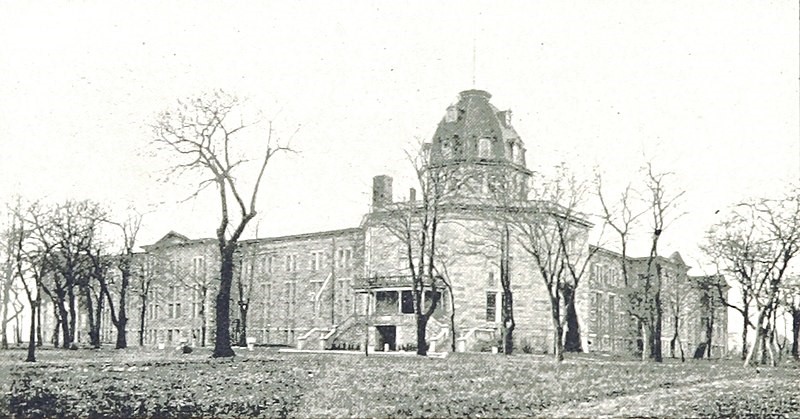Our idea of adventure today might be a road trip to a new destination, or simply getting on a terrifying roller coaster. However, what we envision never seems to include what we watch in movies, like going undercover and spying on an enemy, or traveling around the world in the least amount of days as possible. For journalist Elizabeth Cochrane Seaman, also known by her pen name Nellie Bly, these almost impossible events became realities as her career offered her these kinds of opportunities.1 Even though these assignments seem thrilling, Bly not only completed them of her own free will, but did so to help others by informing the public of various unacceptable behaviors that people were treating others to behind closed doors. There was no doubt in her mind that she would pass up an opportunity to use her gift as an exceptional reporter to liberate those being mistreated who had no voice to be heard. In one of Bly’s early assignments, she willingly allowed herself to be treated as one deemed to have a mental illness. In the 1880’s, she personally experienced the horrors that mentally ill patients went through. in order to have personal insight on the matter.
Bly was still new to journalism and in 1887 editors rarely hired women, so when Joseph Pulitzer’s New York World, a leading newspaper company at the time, offered her the opportunity to investigate an insane asylum, she did not hesitate to accept.2 Bly had so much confidence in herself that she had little doubt that she would be able to pull off the act of being insane. The asylum was located in New York on Blackwell’s Island, where it was known to be easy to get in, but nearly impossible to get out. She had read previous documents about the mistreatment of the mentally unstable and assumed they were all over dramatized; however, she knew little of what she would soon come to experience firsthand.3

Bly started this journey with seventy cents and a single promise from her editor that he would get her released after she spent ten days in the asylum on Blackwell’s Island, even if that meant exposing her identity.4 Bly first began by checking herself into a boarding house for women, and with some acting under her cover name Nellie Brown, she staged an encounter with the police. This soon led four doctors to claim she was insane, and soon after, Bly found herself riding in an ambulance on her way to Blackwell Island.
Once settled into the daily routine that doctors had for the patients at the asylum, Bly began to notice what was occurring within the facility. What happened behind the walls of this mental institution consisted of common mistreatment, such as having few heaters so everyone was freezing, forcing patients to shower in ice cold baths, and feeding them very small portions of food with repulsive tastes.5 The treatment became worse as the attendants were abusive and this misconduct was slowly integrated into part of the day-to-day procedure at the asylum, which Bly had to cooperate with.6 However, she was not alone, as she met other women in the institute that did not have any mental illnesses either, but had been checked in because of miscommunication and other various reasons.
The women Bly encountered each had their own story and explanation for how they ended up in this horrifying mental hospital. One woman specifically had no need to be there, but since she mostly spoke French, she was unable to tell the doctors her story, and because she was crying in fear of never being released, the attendants choked her. Bly recorded many cases such as this one, when women would be hurt and nobody would speak up and change it. The injures towards one of the women resulted in a black eye, and when the doctors asked about it, the nurses claimed she entered the facility with it. Many others shared with Bly the details of the abuse they encountered, including Mrs. Cotter:
Then they tied my hands and feet, and, throwing a sheet over my head, twisted it tightly around my throat, so I could not scream, and thus put me in a bathtub filled with cold water. They held me under until I gave up every hope and became senseless. At other times they took hold of my ears and beat my head on the floor and against the wall. Then they pulled out my hair by the roots, so that it will never grow in again.7

As promised, Bly’s editor got her out of the asylum ten days later, and soon after, Bly was able to share the outrage she discovered on her assignment with the world.8 Bly became that needed voice the patients in Blackwell’s Island Asylum were lacking, leading to a contribution of one million dollars per year towards caring for those with mental illnesses in New York City. This dreadful news had shocked the public and had given Bly the publicity she needed to boost her career. Yet she did not stop there. Bly continued with her passion of reporting and went undercover in places such as women’s prisons, and later traveled to the front lines during War World I.9 During Bly’s profession as a journalist she changed the views that individuals had towards the poor and helpless and how they should be treated in the hopes of having a future in which all people would be given the respect and dignity they deserve.
- Richard Ernsberger Jr., “Nellie Bly: Fearless Reporter,” American History 50, no. 2 (June 2015): 77. ↵
- MasterFILE Premier, August 2017, s.v. “Nellie Bly,” by Keira Stevenson. ↵
- Nellie Bly, Ten Days in a Mad-House (New York: Ian L. Munro, 1887), 1. ↵
- Nellie Bly, Ten Days in a Mad-House (New York: Ian L. Munro, 1887), 3. ↵
- Nellie Bly, Ten Days in a Mad-House (New York: Ian L. Munro, 1887), 13. ↵
- MasterFILE Premier, August 2017, s.v. “Nellie Bly,” by Keira Stevenson. ↵
- Nellie Bly, Ten Days in a Mad-House (New York: Ian L. Munro, 1887), 14. ↵
- Jean Marie Lutes, “Into the Madhouse with Nellie Bly: Girl Stunt Reporting in Late Nineteenth-Century America,” American Quarterly 54, no. 2 (2002): 218. ↵
- Richard Ernsberger Jr., “Nellie Bly: Fearless Reporter,” American History 50, no. 2 (June 2015): 77. ↵



77 comments
Alexis Aranda
This article was a really interesting read. It saddens me that so many patients there did not have mental illness in the first place, and were simply victims of miscommunication. Mental illness was not too studied yet at the time, so I believe that these nurses and doctors that looked over the patients in the asylum almost antagonized and dehumanized them. It’s upsetting to know that not many people ever got to see the light of day again after stepping into that hospital. I have massive respect for Nellie Bly, because not only did she speak out for the helpless, but she put herself in positions so she could understand her audience. It takes an immense amount of bravery to do what she did.
Maria Garcia
Reading this article had me in awe of a woman that I had no clue existed. It takes a lot of bravery to even consider doing something like she did. She needed something to get her career started, and yes at first it seemed really selfish, but the outcome of her going undercover did so much more than what was intended. She acknowledged things that needed to be talked about, and she put herself through similar treatments as other patients, in order to not only boost her career, but get them the ACTUAL help they needed.
Averie Mendez
This article reminds me of American Horror Story’s Asylum, specifically Sarah Paulson’s character. It’s inspiring how devoted Nellie Bly was to uncovering the truth about mental institutions. She was willing to put herself in the horrific and unlivable living conditions its patients had to endure just to reveal how terrible they were. I don’t know much about the conditions of mental institutions today, but I hope we’ve gotten better in terms of care and conditions since then.
Thomas Fraire
Growing up a considerable lot of my school courses showed us the tale of Anne Frank and her family, we would even peruse variants of her journal. Be that as it may, I had never heard or even investigated the tale of how the journal was distributed and the tale of Otto Frank. I can’t start to envision the agony he as a dad and spouse experienced when hearing the news that his family was never again here. The way that he was looked with such a troublesome decision of perusing the journal to distribute it or not is insane and it just demonstrates what a dad would accomplish for his girl. The journal truly filled in as a persuasive bit of writing that gave an alternate point of view of such a shocking time ever.
Diego Terrazas
It is fascinating that this asylum remained unchecked. The fact that they kept women who were not mentally ill in the asylum proves how little they knew about mental illnesses back then. It is a brave thing yet smart thing she did by sneaking into the asylum. Abusing others who are handicapped is such a horrible act. Simply staying there for a few months might have made her insane from all the abuse.
Felicia Stewart
Insane Asylums, now many times referred to as state hospitals, have always been of interest to me since I visited one with a group of fellow psychology students my freshman year of college, which is one of the main reasons I read this article. I believe that there are many things that tend to go on behind closed doors in places like these that should be, and has been more recently, addressed. Many times people that are in power over those hospitalized tend to take advantage of their power. For Nellie Bly to speak out like she did took a lot of courage, as she put a lot on the line when she decided to do that.
Abigail Lopez
Very interesting article. It’s fascinating to know that someone can be so ambitious they’ll do anything to make sure people are aware of what happens behind closed doors in places that are supposed to help you and acknowledge your illnesses. I find Nellie Bly to be a person who is needed in today’s generation because now, everyone is selfish and they don’t think about the reality of certain institutions. I find the mentality as of today is if it’s “out of sight, out of mind”, which doesn’t acknowledge those who are suffering at the hands of people that are being paid to take care of them.
Leeza Cordova
This was a very well written article, and kept me very interested the whole time. Bly was very brave to go undercover, and the actions she did for exposure shows how committed she was to showing the world what happens behind closed doors. Its very sad what happens in these trusted facilities that are created to help people. Alot of people are not aware of the situations and the quote that was inbedded into the article about the treatment one patient suffered really made me think about some of these places can still be doing this.
Victoria Rodriguez
Just from reading the title I knew this would be a great story. Anything about asylums always creeps me out. They have a stigma around them because through history they have gained a bad representation. Cases like this, of the ill being mistreated and even the stable being kept in there against their will has contributed to many scary movies and creepy novels. Great article.
Bictor Martinez
Nellie Bly is the definition of an adventurer. Most would want to travel the world however, Bly had her mind set on other things. To be able to pretend to be insane to get yourself in an asylum to get answers shows how dedicated she is to her work. It was forlorn that the patients within the asylum were being mistreated. These people are the ones who need most help yet they are getting fed their own medicine by being in the facility. Her curiosity was able to be the voice of many that were not able to heard making her an inspiration. Great article!